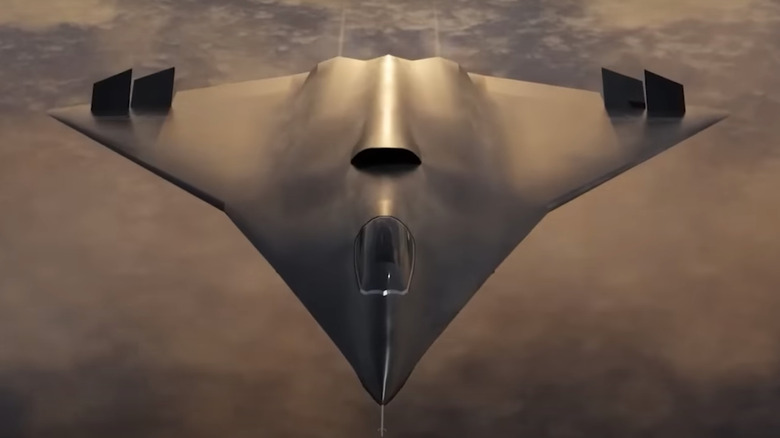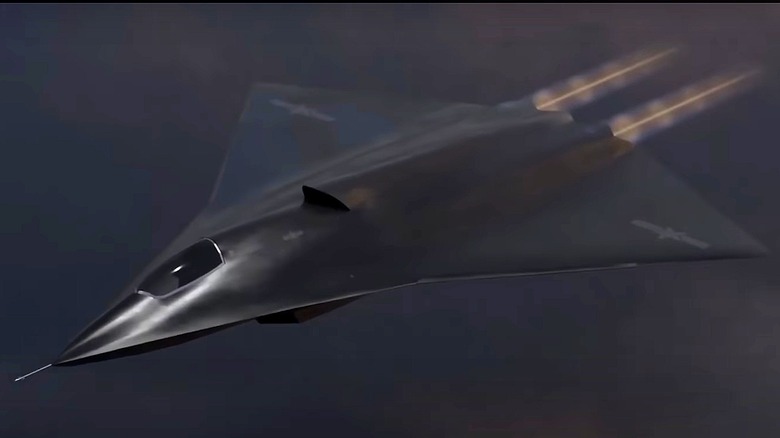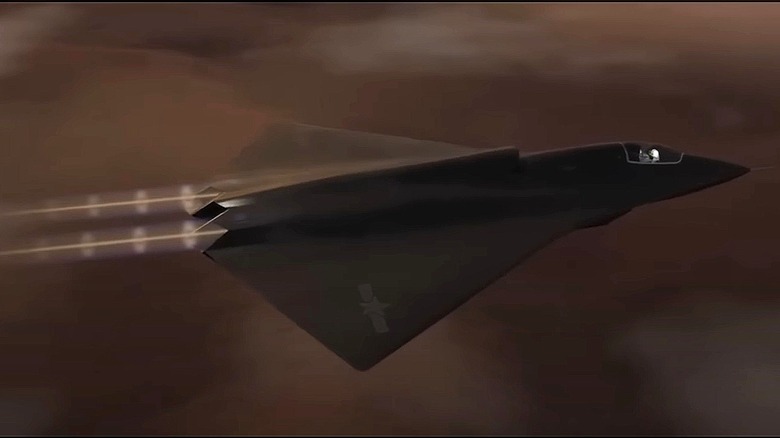All The Unusual Design Features Of China's New J-36 Fighter Jet
The J-36 is not just another stealth plane with a design that throws out decades of fighter-jet convention. China's newest prototype uses a tailless flying-wing configuration with sharply cranked double-delta wings, forming a shape rarely seen in manned fighters. It's a fully-embraced design pivot intended to reduce radar signature from every angle, not just the front. No vertical stabilizing structures mean no obvious radar return on the rear or sides, something even the now-discontinued F-22 and highly-advanced F-35 couldn't fully eliminate. These features contribute to making the J-36 a ghost in the skies as far as detection systems are concerned.
Dr. Emily Carter, an aerospace analyst at the Center for Strategic and International Studies in Washington, D.C, told Bulgarian Military.com, "The combination of a delta wing and stealth features is unusual, but it makes sense if you consider the kind of threats China is preparing for." The shape of the J-36 borrows from Lockheed's 1970s F-117A "Hopeless Diamond" stealth concept. The design was too unstable to fly back then, but modern flight computers changed the game. The J-36 likely uses advanced fly-by-wire controls and perhaps AI-assisted systems to stay airborne without traditional stabilizers.
Its triple-split elevons (control surfaces) and twin-split brake rudders help handle pitch, yaw, and roll, compensating for the lack of vertical structures. If you are wondering about the jet intakes, it boasts two side-mounted caret-style inlets and one dorsal supersonic inlet, all positioned to feed three engines. That's not a typo. This thing has three engines in the back, something no other current fighter boasts.
Trijet power and internal muscle
The three engines use low-observable exhausts to reduce the J-36's infrared signature. While it's unclear what engine model powers it, the Shenyang WS-10C or a prototype WS-15 are prime suspects. The trijet layout gives the J-36 high-altitude endurance and possibly even supercruise (the ability to exceed the speed of sound without afterburners). All these breakthroughs have forced even the U.S. Department of Defense to admit that the Chinese Air Force is "rapidly approaching technology typical of U.S. standards." The report also hints at another big priority: range.
Early estimates peg the J-36's combat reach at up to 3,000 km, far more than the J-20. That isn't just for show; it allows the J-36 to carry more internally without compromising performance. This thing is heavy, with a maximum takeoff weight possibly around 55 tons, and that weight is distributed wisely. Between its wide wings and deep belly, the J-36 has room for massive internal weapons storage. It can likely carry long-range PL-17 missiles, YJ-12 anti-ship missiles, and possibly land-attack munitions, all without hanging anything on the wings. Even the dual-wheel landing gear (two wheels each on all three struts) reinforces how much mass the airframe supports.
Designed to command as well as fight
The J-36 isn't built just to dogfight. If anything, it's designed to avoid close-range combat entirely. Its real role seems to be that of an undetectable long-range command-and-control hub; the kind of aircraft that can see far, shoot far, and direct unmanned assets deep behind enemy lines. It's the physical expression of system-of-systems warfare: a manned centerpiece surrounded by drone swarms and supported by satellites, radar, and electronic warfare units.Its advanced sensor array likely includes side-scanning Active Electronically Scanned Array (AESA) radar and electro-optical sensors.
Along with its large internal volume, this makes the J-36 perfect for the modern networked battlefield. It can link with "loyal wingmen" drones and coordinate air-to-ground strikes; think less dogfighter and more aerial destroyer. Some analysts have floated that exact term, comparing it more to a naval command ship than a traditional jet fighter.This expansion of aircraft roles is part of a global trend. The U.S. Air Force's futuristic NGAD and B-21 Raider have begun to blur similar lines, and China is responding in kind.
With its stealth capabilities, range, and payload, the J-36 can hit far-off targets and manage engagements from well behind the front lines. Its real strength may not be what it can take out, but what it can coordinate. That makes the J-36 not just a new plane, but a preview of how wars will be fought in the future. As defense analyst Alex Hollings told the Eurasian Times, the J-36 is a "serious contender in the evolving landscape of air warfare."


